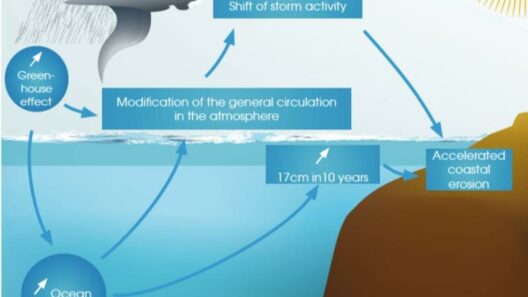As we stand on the precipice of the future, an intriguing question arises: What does the future hold for climate change? The multifaceted nature of this global crisis demands a nuanced examination, as a plethora of research and expert insights illustrate the pathways we may traverse in the coming decades. From the cascading impacts of human activity on planetary systems to the potential for groundbreaking technological innovations, the narrative surrounding climate change is both urgent and evolving.
To begin, it is essential to acknowledge the current trajectory of greenhouse gas emissions. The Intergovernmental Panel on Climate Change (IPCC) warns that without significant interventions, global warming will surpass the critical threshold of 1.5 degrees Celsius above pre-industrial levels by 2040. This alarming forecast raises the prospect of increasingly volatile weather patterns, rising sea levels, and pervasive biodiversity loss. As ocean temperatures continue to warm, marine ecosystems face new threats, such as coral bleaching and altered fish migration patterns.
In conjunction with the rising temperatures, another pivotal factor to consider is the socio-economic implications of climate change. Developing nations, often the least responsible for carbon emissions, are frequently the most vulnerable to climate disasters. The intersection of environmental degradation with social inequities presents an intricate challenge. Vulnerable populations grapple with food and water scarcity, displacement from their ancestral lands, and heightened health risks. As we probe into the future, addressing these disparities is paramount; failure to do so may exacerbate existing inequalities and ignite geopolitical tensions over dwindling resources.
Amid the gloom, however, there is a flicker of optimism fueled by innovation. Scientists and engineers are developing a cornucopia of climate technologies aimed at abating the ongoing crisis. Renewable energy sources, such as solar and wind, have witnessed a meteoric rise in adoption, rendering them more economically viable than their fossil-fuel counterparts in many regions. As production costs continue to plummet, projections indicate that renewable energy could account for up to 90% of the world’s power supply by 2050. This shift not only promises a reduction in emissions but also paves the way for energy independence and job creation in green sectors.
Moreover, advancements in carbon capture and sequestration (CCS) present another tantalizing opportunity. By capturing CO2 emissions at their source and storing them underground, CCS technology could enable us to mitigate the adverse effects of industrial processes. Pioneering projects across the globe are striving to demonstrate the efficacy and scalability of this approach. Yet, a lingering question remains: Can CCS evolve from niche technology to a ubiquitous solution rapidly enough to make a tangible difference?
As we explore these emerging technologies, the role of policy cannot be overlooked. Climate action relies heavily on a robust legislative framework that encourages sustainable practices. Governments are faced with the Herculean task of creating and enforcing regulations that support clean energy initiatives, promote public transportation, and incentivize sustainable agricultural practices. The introduction of carbon pricing mechanisms and emissions trading schemes can serve as vital tools in this endeavor. Yet, the political landscape is often fraught with obstacles. Competing interests and the inertia of established industries challenge the swift adoption of meaningful climate policies.
Furthermore, grassroots movements have emerged as formidable players in the climate discourse. Across continents, citizens are mobilizing, advocating for urgent action and accountability from their governments. The youth climate strikes, prompted by figures like Greta Thunberg, exemplify the increasing urgency of public demand for climate justice. This grassroots activism is reshaping the political climate and pressuring decision-makers to incorporate environmental considerations into their agendas. As public awareness escalates, the potential for collective action burgeons, challenging societal norms and spurring necessary transformations.
In the realm of environmental restoration, regenerative agriculture stands as a beacon of hope. This innovative approach not only seeks to produce food sustainably but also aims to enhance soil health, sequester carbon, and bolster biodiversity. By transitioning away from conventional farming methods, farmers can contribute to building resilient ecosystems that harmonize with natural processes. As global food systems confront the dual challenges of climate change and population growth, regenerative practices could redefine agricultural paradigms, promoting harmony between food production and ecological stewardship.
While the future remains uncertain, envisioning a multi-faceted response to climate change presents a formidable challenge. The tapestry of climate action necessitates an inclusive and comprehensive approach that interweaves technological advancement, policy reform, grassroots mobilization, and sustainable practices. Each thread contributes to a narrative of resilience, adaptability, and hope amid adversity.
Ultimately, the question persists: Are we prepared to meet the future head-on and mitigate the impacts of climate change? The time for action is now. Engaging with experts and communities, fostering innovation, and holding ourselves accountable will be pivotal in shaping a future where humanity lives in harmony with the planet. As we navigate the complexities of climate change, we must remain steadfast in our commitment to crafting a sustainable world for generations to come.



